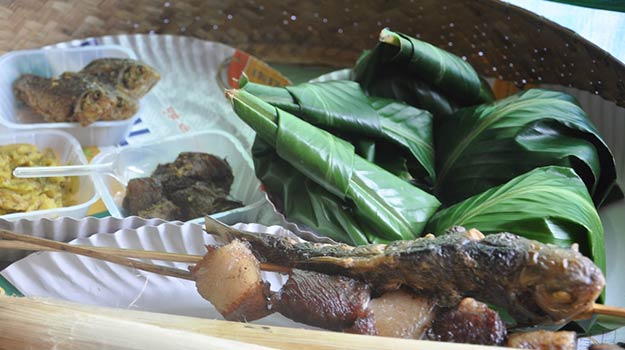With regards to food, it is said that the cuisine of any region is determined by its culture. And, so is the case with the beautiful north eastern state of Arunachal Pradesh. Where its cuisine exhibits a lot of tribal influence, a perfect reflection of the culture of this state. This state is basically non-vegetarian oriented. And the food is normally cooked using minimum spices thereby making it bland. Organic vegetable herbs and fermented bamboo shoots are also used commonly in this region to add to this region’s own unique flavor. Overall, the cuisine in this beautiful state is not only delicious but is nutritious too.
Read More: CHERRAPUNJI – FACTS ABOUT THE WETTEST PLACE ON PLANET EARTH
[put_wpgm id=96]
Arunachal Pradesh Map
The staple food of this region is rice which is usually eaten along with fish, meat, or vegetables.
There are a number of popular delicacies in Arunachal Pradesh and they are as follows
- Bamboo shoot fry: Is essentially prepared from bamboo shoots. Baking soda is also used in this dish. It is usually cooked on slow fire and is served hot and crispy.
- Poora Haah: Is a popular “Duck meat” delicacy in which the duck is initially washed and cleaned properly. Then salt and slime juice are applied on the body of the duck. The duck is then roasted on the charcoal fire.
- Fish Fried Rice: Is a “rice and fish” delicacy which requires long grained rice and fresh fish. The fresh fish is initially cut into pieces. Then steamed rice and the cut fish pieces are fried in oil and served hot.
- Arunachal Pradesh Fish Stew: Is a popular delicacy consisting of fish and salty vegetable.
- Pasa: Is a popular fish soup prepared from raw fish.
- Ngatok: Is another popular authentic Arunachal fish curry.
- Apang: Or popularly known as “rice beer” is a famous alcoholic drink in this region. This beverage is made from fermented rice or millet.
Apart from the above-mentioned delicacies “Chinese” food is also quite popular among the locals in the region.
So as is evident the essence of food in Arunachal Pradesh lies in its tribal culture. This only reaffirms the fact that the two C’s i.e. culture and cuisine are bound together by an inseparable bond that can never be broken.

